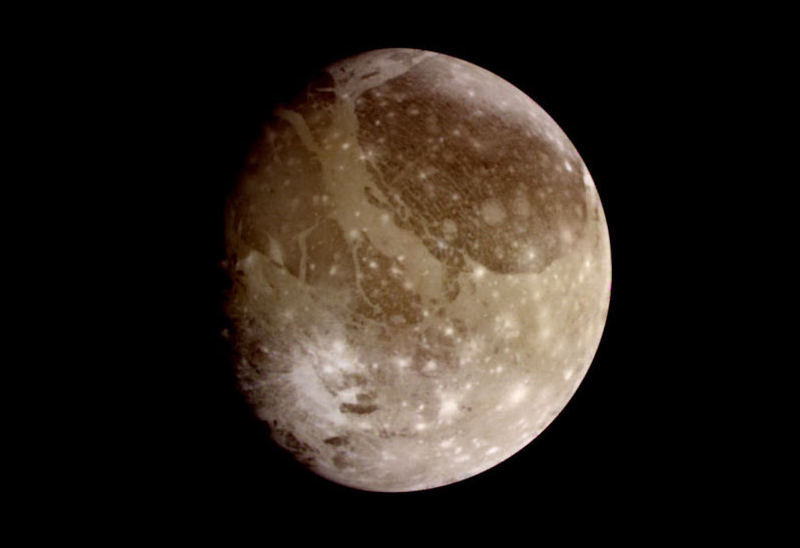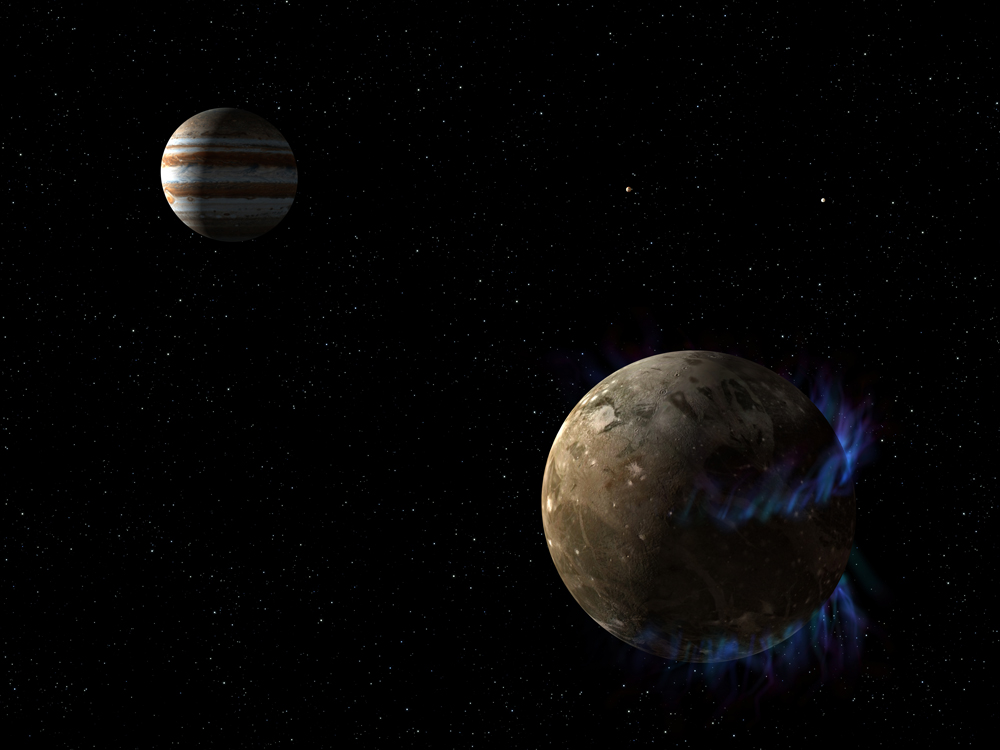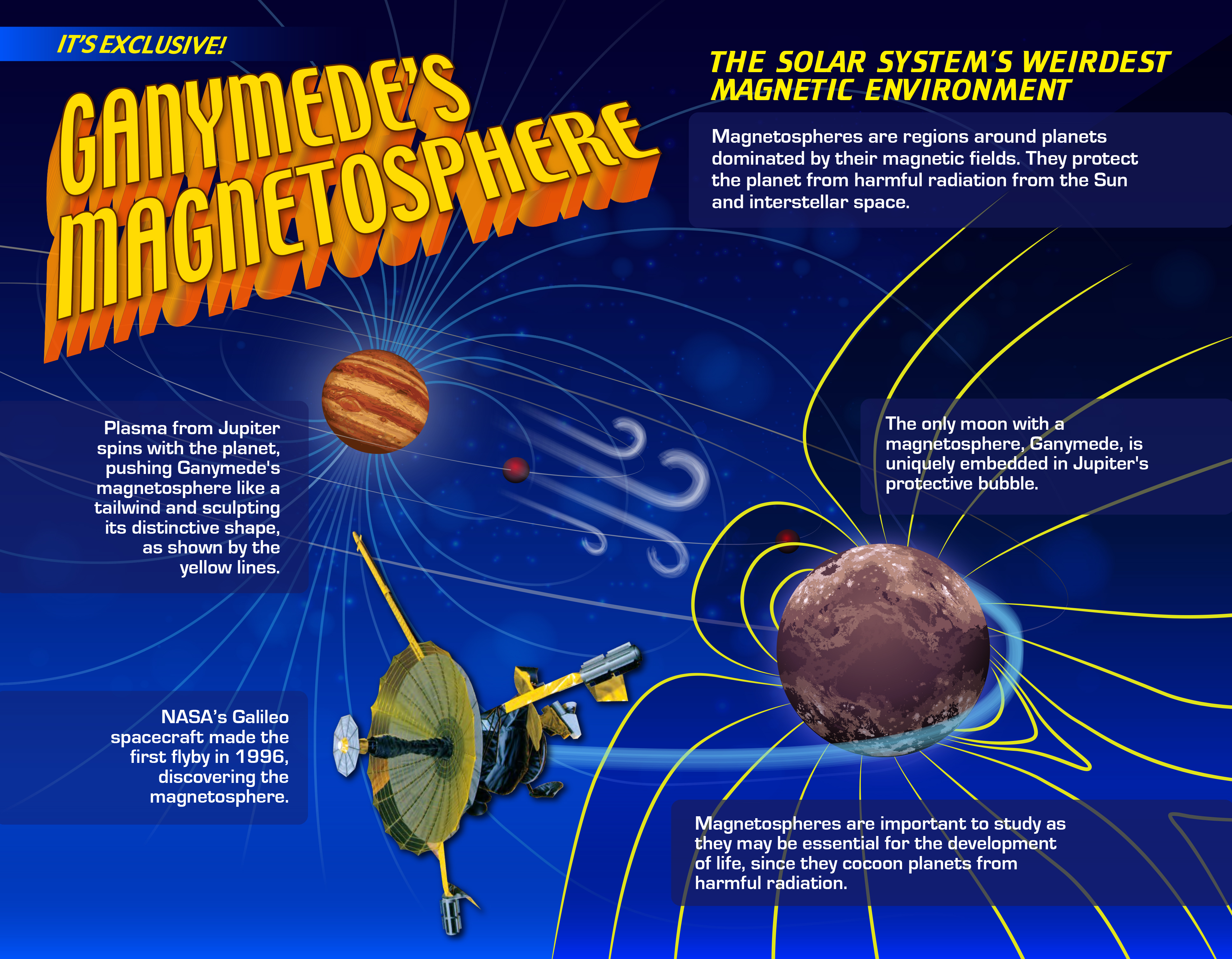Decades-Old Data Shows Auroras on Jupiter's Moon Ganymede in a New Light

New data on Jupiter's moon Ganymede, coming from a mission 20 years old, highlights the ways in which this very alien moon is surprisingly Earthlike: Auroras shine over its polar caps, it's cocooned by a strong magnetic field and it might even harbor oceans.
In a new statement, NASA revealed that data from the Galileo spacecraft, which explored the Jupiter system from 1995 to 2003, is presently helping scientists get a fresh take on Ganymede's environment.
Ganymede is the largest moon in the entire solar system. It's just slightly smaller than the planet Mars and has a radius of 1,635 miles (2,631.2 kilometers). [Photos of Ganymede, Jupiter's Largest Moon]
Ganymede is also a unique solar-system body because it's the only moon with an internally generated magnetosphere. This magnetic-field region surrounds Ganymede like a bubble and shelters it from cosmic radiation. And, just like on Earth, the magnetosphere causes auroras near this moon's poles.

Scientists sought to learn more about why these glowing lights shine so brightly on Ganymede, according to the NASA statement, which was released on Monday (April 30). Magnetosphere research may also help us better understand how life might exist around solar-system moons or on exoplanets, the space agency said.
"We are now coming back over 20 years later to take a new look at some of the data that was never published and finish the story," Glyn Collinson said in NASA's recent statement. Collinson is the lead author of a recent paper about Ganymede's magnetosphere and is a research associate at NASA’s Goddard Space Flight Center in Greenbelt, Maryland. "We found there's a whole piece no one knew about," Collinson added.

Galileo's Plasma Subsystem (PLS) instrument captured data about, well, plasma. Ganymede's magnetic field directs plasma, an electrically charged gas, and causes these excited particles to occasionally collect at the moon's poles, thereby causing the auroras. PLS also took data about how Jupiter's own magnetosphere influences plasma's movement around Ganymede.
Get the Space.com Newsletter
Breaking space news, the latest updates on rocket launches, skywatching events and more!
The recent study analyzed one of Galileo's fortuitous observations. During a flyby, the spacecraft witnessed strong flows of plasma moving between Jupiter and Ganymede. This is possible because Jupiter emits radiation, too, not unlike the sun. According to NASA officials, the magnetospheres of Ganymede and Jupiter reconnected, causing the intense pump of plasma that would move toward Ganymede's poles and create the unusually bright auroras.
According to NASA officials, the Galileo PLS data collected during the strong-flow event may also provide new insights about Ganymede's subsurface oceans, which have the benefit of being shielded by Ganymede's magnetosphere.
The findings were published on Monday (April 30) in the journal Geophysical Research Letters.
Follow Doris Elin Salazar on Twitter @salazar_elin. Follow us @Spacedotcom, Facebook and Google+. Original article on Space.com.
Join our Space Forums to keep talking space on the latest missions, night sky and more! And if you have a news tip, correction or comment, let us know at: community@space.com.

Doris is a science journalist and Space.com contributor. She received a B.A. in Sociology and Communications at Fordham University in New York City. Her first work was published in collaboration with London Mining Network, where her love of science writing was born. Her passion for astronomy started as a kid when she helped her sister build a model solar system in the Bronx. She got her first shot at astronomy writing as a Space.com editorial intern and continues to write about all things cosmic for the website. Doris has also written about microscopic plant life for Scientific American’s website and about whale calls for their print magazine. She has also written about ancient humans for Inverse, with stories ranging from how to recreate Pompeii’s cuisine to how to map the Polynesian expansion through genomics. She currently shares her home with two rabbits. Follow her on twitter at @salazar_elin.









